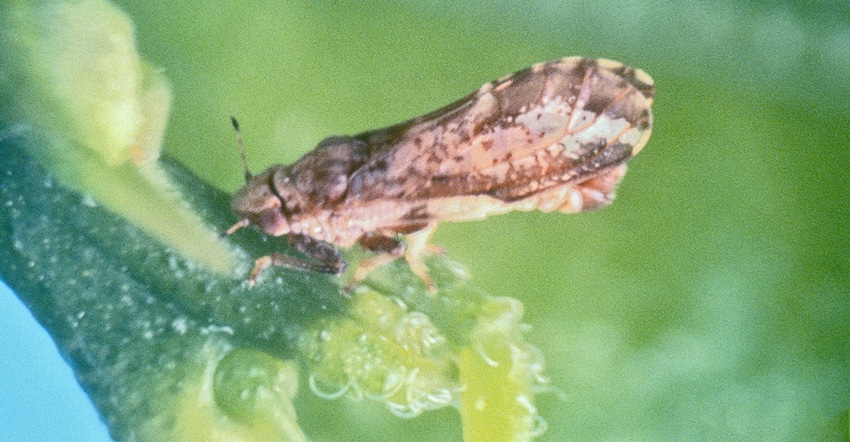March 13, 2018

The world of insecticides is being turned upside down. Existing products that farmers have come to rely on have, in many cases, simply stopped working against key-target pests. This leaves producers with little recourse but to rethink cropping plans, or to leave certain businesses. But beyond resistance, bringing new products to market means facing new, stiffer challenges.
During an in-depth look at the science behind insecticides recently, BASF experts explored the challenges, and then offered news of new products coming soon to take on some tough pests. There are several issues researchers have to deal with these days when it comes to developing pesticides, including environmental concerns, as well as potential impact on non-target insects such as bees.
Neonicotinoid battle a prime example
The current battle over neonicotinoids is a prime example. These are effective products, but there are concerns about the impact of some forms on non-target insects — including bees. Maintaining beneficial insect health requires a different approach to product development, and may also mean the days of new broad-spectrum insecticides are over.
Joseph Wisk, manager, exotoxicology, BASF, explains that development starts with a large number of molecules that are in specific classes of chemistry. They’re tested on the target pest, and researchers have to better understand their mode of action for regulators.
“In development, we get down to one molecule, and we work with that to do all the registration studies for toxicity, residues and other impacts,” he says. “And that molecule has to be effective on the pest, too.”
He adds that the company also has to work on the stewardship and sustainability of that product in the market. Wisk explains that the company works to exceed the very high regulatory standards set in specific markets. “We want a clean bill of health from EPA,” he says.
One way to get there is to move away from broad-spectrum products and push toward targeted approaches. That’s what BASF is doing with Inscalis, a new product that specifically targets sucking-type insects, including soybean aphids and psyllids.
But being more targeted is important, since many times those insecticides are sprayed at the same time as beneficial insects are doing their work. That’s true for controlling Asian citrus psyllid, the key vector for the disease that causes citrus greening — a disease that’s ravaging orange crops across Florida
Wisk explains that these days it’s difficult to find a compound that is “effective on a number of pest insects and nontoxic to bees.” For BASF, Inscalis provides control of key pests; but if the U.S. EPA approves the registration, this product can be sprayed when orange trees are in blossom — even as bees are doing their pollination. The compound is that targeted.
The rise of resistance
Jared O’Connell, global marketing manager, BASF, explains that rising resistance is taking out whole classes of insecticides, which is not good news for farmers. “There are 29 mode-of-action groups on the [Insect Resistance Action Committee] chart,” he says. “Neonicotinoids are Group 4, and there are 8 neonics in Group 4 and 4A. All act similarly, and if resistance develops to one, all are impacted,” he says.
It’s that concern that drives researchers to find new modes of action. Inscalis will be a Group 9 product on the IRAC list, but it is a mode of action that currently has little resistance. And BASF isn’t done.
O’Connell points to broflanilide, which is for control of chewing pests — a problem in specialty crops and row crops, such as wireworms. This product also has a unique mode of action, but isn’t heading to market before 2019. BASF isn’t done, however; it has more products on the way. All are targeted and use new modes of action to stop pests.
John Descary, product marketing manager, BASF, explains that Inscalis is a Group 9B insecticide for piercing and sucking pests, including aphids, whiteflies and psyllids. The product works on the chordotonal system of the insect — essentially the insect’s antennae and key joints.
The product, when applied, causes almost an immediate cessation of feeding. The insect becomes disoriented, so much so that it can also no longer feed, and soon dies. Descary says that competitive products on the market allow the insect to continue feeding until death; with Inscalis, the feeding stops quickly.
“We’re not registered yet, but we are looking at registration by the fourth quarter,” he says. “When registered, we’ll look to markets including soybean aphids, citrus psyllid and the whitefly in soybeans and cotton.”
For citrus growers in the West and East, Inscalis may provide a solid answer to a critical problem. But Descary, Wisk and O’Connell all talked about stewardship of the product. No matter how good the product is, it will require stewardship for its use. That means using other compounds as well to help control the best to avoid any resistance.
The new world of crop protection includes consumers concerned about product safety and bees. For BASF, a market-sensitive approach to developing new products offers the potential for a serious payback when these products do reach the market.
About the Author(s)
You May Also Like






